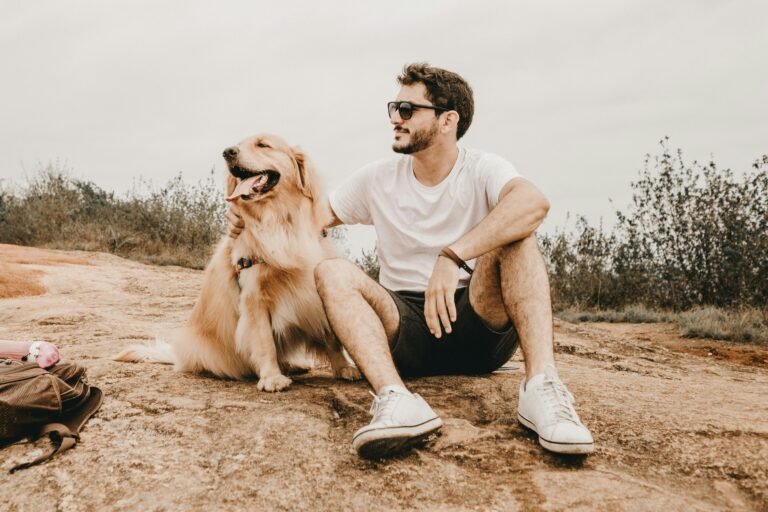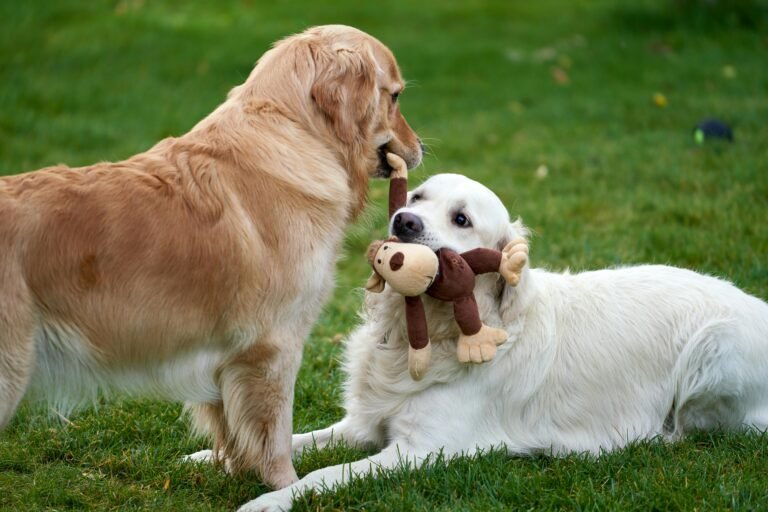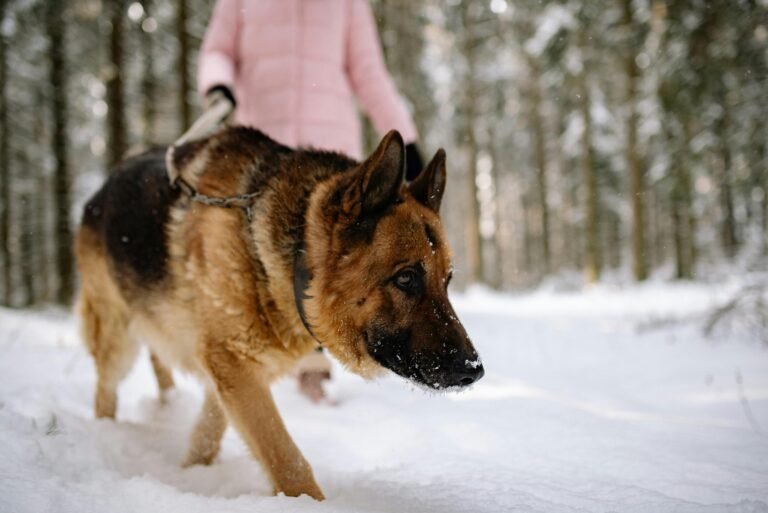Introduction
Bringing home a second (or third!) dog can be one of the most rewarding decisions — double the love, double the fun. But it can also mean double the chaos if you don’t manage the relationships carefully. Just like humans, dogs have unique personalities, social needs, and emotional triggers. Whether you’re adding a new puppy or balancing older pack members, understanding canine group psychology is key to creating a peaceful multi-dog household.
1. Understanding Pack Psychology
Dogs are social animals, wired for cooperation and communication. In nature, they thrive in groups built on stability and trust, not dominance. In a home, your family becomes their “pack,” and you — not through fear, but through calm consistency — are the central figure holding it together.
- 🐶 Dogs crave clear social structure.
- 🐾 They observe patterns — who feeds, who leads, who comforts.
- 💬 They communicate constantly through body language and energy.
Pro Tip: A peaceful pack begins with a peaceful leader. Dogs mirror your tone, body language, and stress levels more than they obey commands.
2. Introducing a New Dog the Right Way
First impressions matter — especially for dogs. A poor introduction can create tension that lingers for months. Proper introductions build the foundation for lifelong harmony.
- 🐾 Neutral territory: Meet outdoors in a calm, open area. Avoid the older dog’s “home turf” to reduce territorial defensiveness.
- 👃 Let them sniff indirectly: Walk side-by-side at a distance before face-to-face interaction.
- 🕰️ Take it slow: Short, positive interactions build trust faster than forcing instant friendship.
Watch body language closely — loose tails, relaxed postures, and soft eyes mean “let’s be friends.” Stiffness, avoidance, or hard stares signal the need for more space and time.
3. Establishing Household Harmony
Dogs, like people, respect predictable systems. A structured routine helps prevent resource guarding and conflict.
- 🕓 Keep schedules consistent: Feed, walk, and play at the same times daily.
- 🍽️ Separate feeding zones: Even the most tolerant dogs can become protective around food.
- 🛏️ Individual rest spaces: Each dog needs a designated bed or area to retreat and relax.
- ❤️ Equal attention: Jealousy can arise if one gets more affection or privileges.
Pro Tip: Fairness builds trust. Dogs quickly sense favoritism — especially during mealtimes or cuddles.
4. Managing Energy Levels
Conflicts often stem from mismatched energy rather than aggression. A senior dog might find a young puppy’s play exhausting, while two high-energy breeds may fuel each other into chaos. Balance is key.
- ⚡ Pair exercise appropriately — walk dogs separately if paces differ.
- 🧩 Use enrichment toys to focus energy mentally rather than physically.
- 🌙 Ensure rest periods — over-tired dogs become irritable just like humans.
Pro Tip: A tired mind creates peace. Ten minutes of sniffing games can calm dogs more than an hour of fetch.
5. Reading Canine Communication
Dogs rarely “fight out of nowhere.” They send dozens of subtle cues first. Learning to read these signals can prevent escalation.
- 👀 Soft eyes and loose body: Comfortable and friendly.
- 🦴 Freezing or hard stare: Warning sign — tension rising.
- 🐕 Sideways glance or avoidance: One dog is signaling peace or discomfort.
- 🐾 Play bows and relaxed tails: Positive, social energy.
Intervene early with calm redirection — call them apart, reset energy, and redirect to play or training. Never yell or punish mid-conflict; it raises tension for everyone.
6. Preventing Resource Guarding
One of the most common triggers for multi-dog tension is resource guarding — protecting food, toys, or even people. It’s not “bad behavior”; it’s an instinct rooted in survival. But it can be managed.
- 🍗 Feed dogs in separate spaces or crates.
- 🧸 Rotate toys instead of leaving piles available.
- 👋 Teach “trade” or “leave it” with positive reinforcement.
- 💖 Avoid petting one dog over another when both are close — share affection evenly.
Pro Tip: Praise generosity. When one dog calmly yields space or toy access, reward that cooperation instantly.
7. Balancing Attention and Affection
Dogs are emotional observers — they notice who gets the belly rubs and who gets ignored. Uneven affection can breed jealousy or insecurity, especially in sensitive breeds.
- 🫶 Greet all dogs when entering a room — even a brief acknowledgment matters.
- 🐾 Alternate training time or cuddle sessions individually.
- 🦴 Give group play, but maintain solo bonding too.
Think of it as emotional budgeting — fair distribution keeps everyone’s tail wagging.
8. Introducing Puppies Into Adult Packs
Adding a puppy to a home with older dogs requires patience. Puppies lack social awareness, while seniors value routine. To keep peace:
- 🍼 Limit puppy energy bursts — use playpens for rest breaks.
- 🐕 Allow older dogs to correct gently — it’s part of teaching boundaries.
- 💬 Supervise play — step in if it becomes too rough or one-sided.
Pro Tip: Praise calm coexistence, not constant play. The goal is comfort, not chaos.
9. Multi-Dog Training Essentials
Training multiple dogs together teaches patience and cooperation, but it’s best to start individually first.
- 🎯 Train one at a time until commands are solid.
- 🐾 Gradually combine short group sessions — use names to direct attention.
- 🍖 Reward calm group behavior — simultaneous “sit” and “stay” builds unity.
Pro Tip: Avoid competition during training. Reward all dogs together when they respond calmly to prevent rivalry.
10. When Conflicts Arise
Even in the best-managed homes, scuffles can happen. The goal isn’t to eliminate all tension but to manage it effectively.
- 🚫 Don’t punish physically — it increases fear and defensiveness.
- 🗣️ Use calm, firm tone to separate dogs safely.
- 🪑 Give short “cool-down” breaks in separate areas.
- 📅 Observe triggers — food, toys, space — and adjust management.
If aggression escalates or becomes frequent, consult a certified behaviorist. Many “bad” relationships can be repaired through structured desensitization and parallel bonding exercises.
11. Signs of a Happy, Balanced Multi-Dog Home
- 🐕 Dogs share space comfortably — no growling or guarding.
- 🐾 They rest near each other without tension.
- 🎾 Play is balanced and mutual — both take turns.
- 🧠 Each dog respects boundaries — emotional and physical.
When balance exists, you’ll notice fewer conflicts, calmer energy, and dogs who mirror each other’s good behavior — a true sign of harmony.
Conclusion
Living with multiple dogs can be pure joy when guided by understanding, not dominance. By observing their natural communication, maintaining fairness, and leading with calm confidence, you create a home where cooperation thrives. Each dog learns not just to coexist but to connect — forming a peaceful, social family bound by trust. Remember, you’re not the “alpha” — you’re the anchor that keeps every tail wagging in sync.




